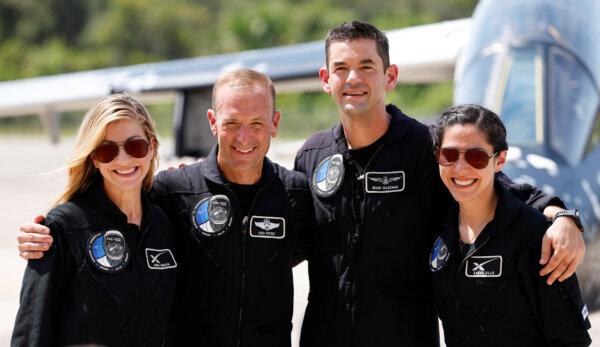First Private Spacewalk in History: Astronaut on Polaris Dawn SpaceX Mission
Tethered to the capsule, billionaire astronaut Jared Isaacman was expected to spend around 12 minutes in space before returning to the capsule.
An astronaut made history on Sept. 12 by performing the first private spacewalk, exiting SpaceX’s Crew Dragon capsule as it circled the Earth.
Isaacman, a pilot and founder of an electronic payment company, is contributing to the mission’s funding.
“Back at home we all have a lot of work to do, but from here, Earth sure looks like a perfect world,” Isaacman said upon exiting the craft.
Shortly after, SpaceX engineer Sarah Gillis, 30, also experienced space.
Both astronauts were connected to the capsule.
SpaceX’s Anna Menon, 38, and retired Air Force pilot Scott Poteet, 50, are also on Dragon.
Previously, only government astronauts with years of training had performed spacewalks.
Isaacman and Gillis conducted tests on new SpaceX spacesuits, evaluating their ability to hold positions and move in all directions. The objective of the spacewalk was to test the suits, according to the company.
The gray-and-white suits feature enhancements like a heads-up display in the helmet.
The four individuals on Dragon will also conduct additional research during the five-day mission, including collecting data on radiation. The craft has already reached an altitude of 874 miles, surpassing the record for a crewed mission not bound for the Moon, marking the farthest humans have traveled in space since the Apollo 17 flight to the Moon in 1972. It descended to a 435-mile position for the spacewalk.
Prior to Isaacman leaving the capsule, various checks and procedures were performed. Pure oxygen was pumped through the crew’s suits, and the nitrogen purge from their bodies was completed. The pressure in the Dragon cabin decreased gradually as spacesuit pressurization began. All four crew members experienced the vacuum of space during the spacewalk.
The Polaris crew underwent two-and-a-half years of training with SpaceX mission simulations and experiential learning in challenging, uncomfortable environments, as stated by Poteet.
“I can tell you without a doubt this has been some of the most challenging training that I’ve ever experienced,” Poteet commented in Cape Canaveral before the launch.
The spacewalk occurred while a record 19 astronauts orbited Earth following Russia’s Soyuz MS-26 mission, which transported two cosmonauts and a U.S. astronaut to the International Space Station on Wednesday, raising its headcount to 12. Meanwhile, three Chinese astronauts are on the Tiangong space station.

Anna Menon (L), Scott Poteet (2nd L), commander Jared Isaacman (2nd R), and Sarah Gillis (R), crew members of Polaris Dawn, a private human spaceflight mission, attend a press conference at the Kennedy Space Center in Cape Canaveral, Florida, on August 19, 2024. Joe Skipper/Reuters
Before Thursday, there had been approximately 270 spacewalks conducted on the International Space Station since its establishment in 2000, and 16 by Chinese astronauts on Beijing’s Tiangong space station.
The U.S. spacewalk during the Gemini mission in 1965 implemented a similar procedure to the one planned for Polaris Dawn, where the capsule was depressurized, the hatch opened, and a spacesuited astronaut ventured outside on a tether.
This is a developing story that will be updated.
Reuters contributed to this report.





